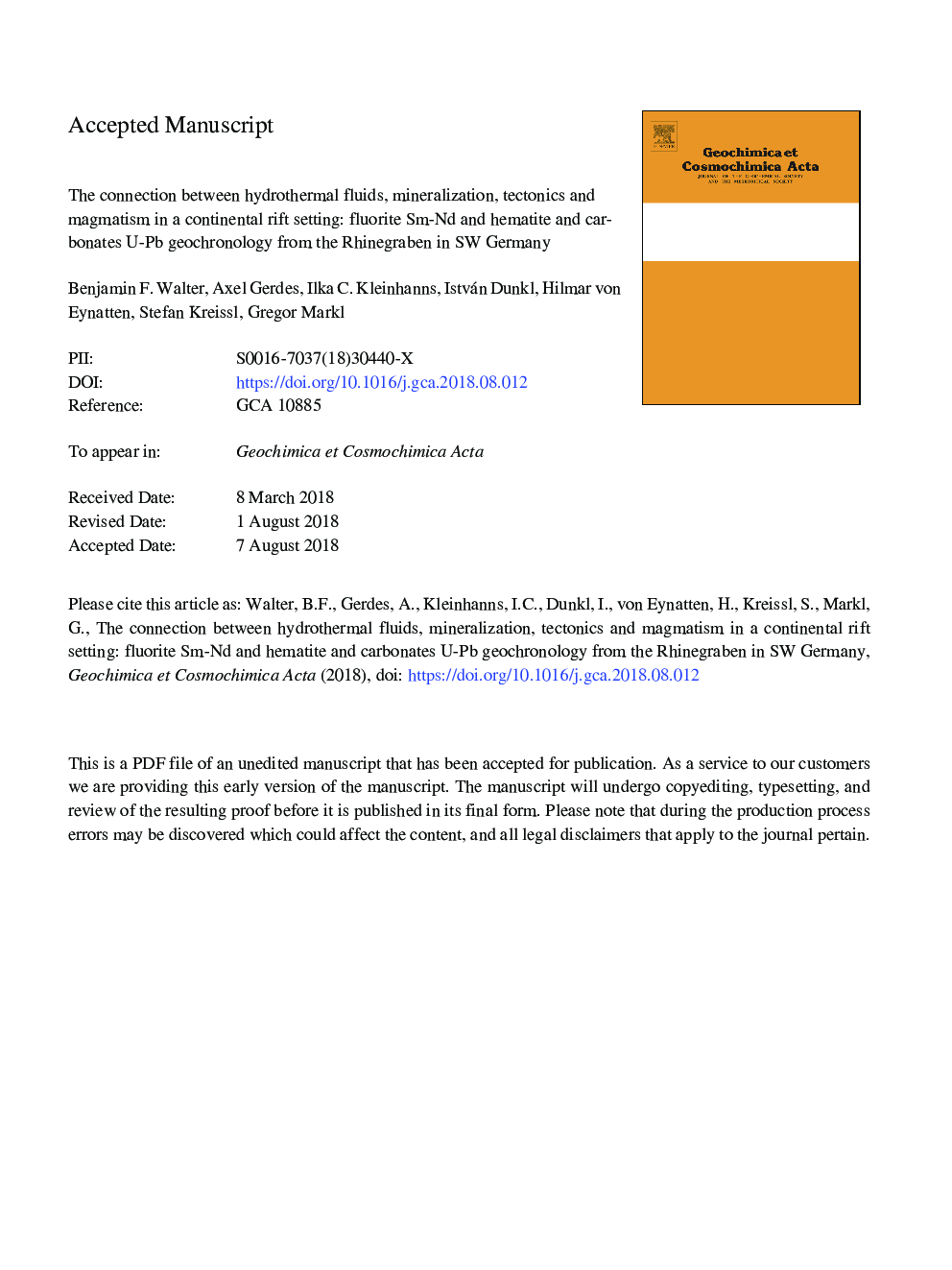| Article ID | Journal | Published Year | Pages | File Type |
|---|---|---|---|---|
| 8959577 | Geochimica et Cosmochimica Acta | 2018 | 80 Pages |
Abstract
Fluid properties changed after the deposition of Middle Triassic Muschelkalk evaporites from low salinity, high temperature (1-6â¯wt.% NaCleq, 200-270â¯Â°C, cooling late-metamorphic basement fluids) to high salinity, moderate temperature (20-26â¯wt.% (NaClâ¯+â¯CaCl2), 50-170â¯Â°C, mixture of a modified bittern brine (“basement brine”) with halite dissolution brine). This change led to large scale ore deposition (fluorite-barite-quartz with Pb-Zn-Cu, Bi-Co-Ni-Ag-U, Fe-Mn ores). During the Paleogene and Neogene, previously separated aquifers from various sedimentary units were connected by juxtaposition of the fluid source rocks during Rhinegraben rifting, which resulted in variable salinity and temperature fluids (1-26â¯wt. % (NaClâ¯+â¯CaCl2), 50-350â¯Â°C) by a multi-component fluid mixing process. Typical mineralization related to this shows barren or Pb-Zn-Cu veins with large amounts of barite.
Keywords
Related Topics
Physical Sciences and Engineering
Earth and Planetary Sciences
Geochemistry and Petrology
Authors
Benjamin F. Walter, Axel Gerdes, Ilka C. Kleinhanns, István Dunkl, Hilmar von Eynatten, Stefan Kreissl, Gregor Markl,
